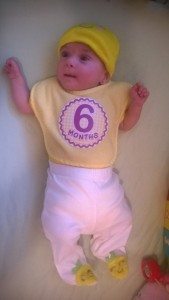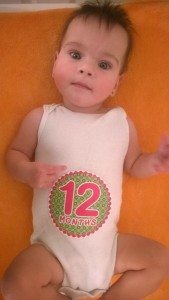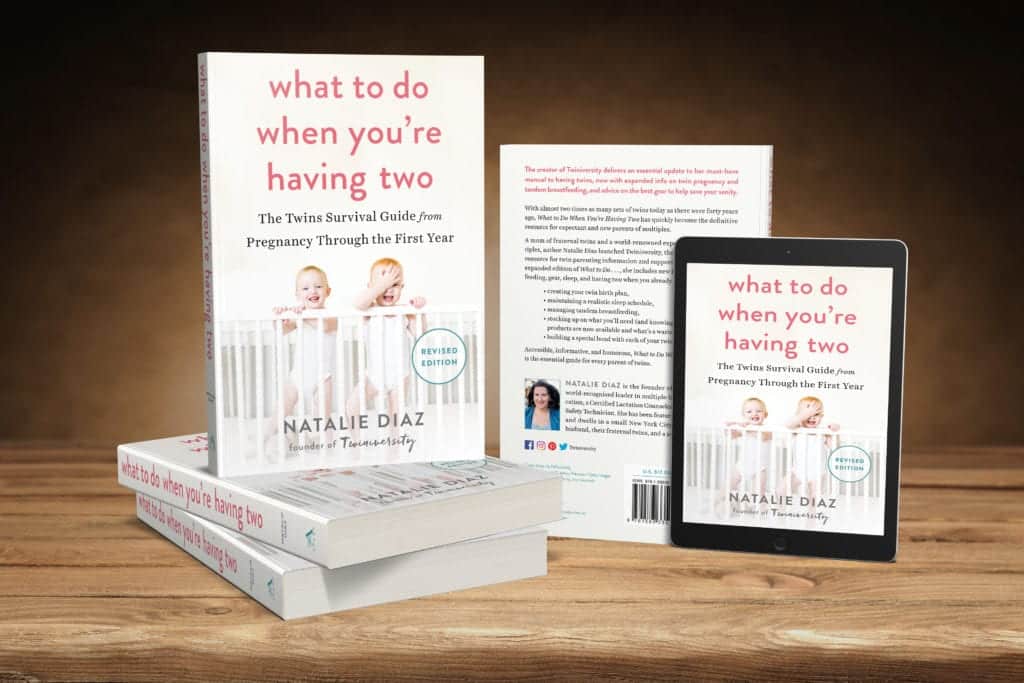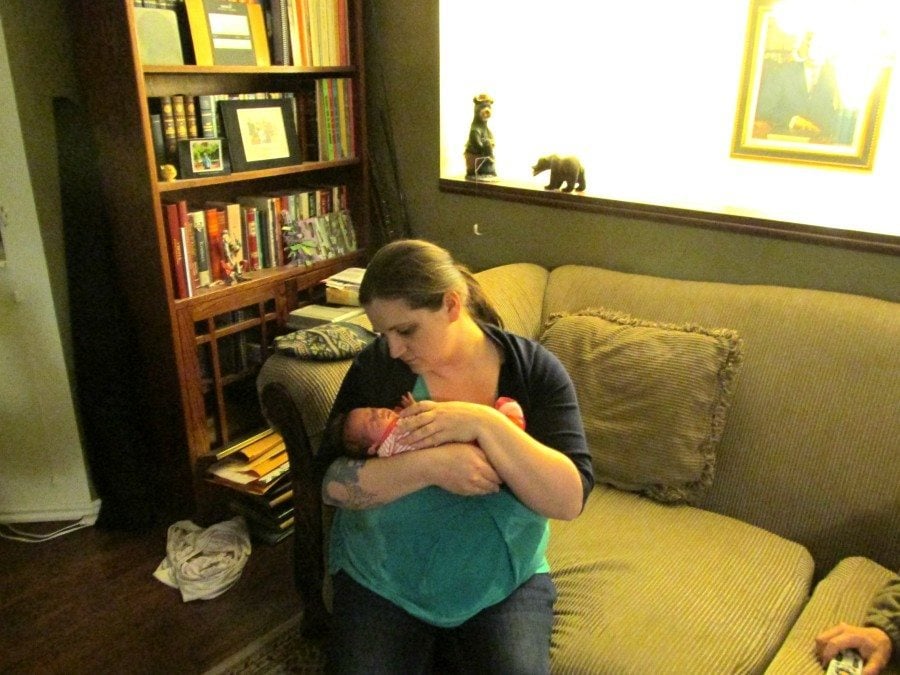Last updated on April 17th, 2024 at 10:17 pm
When I look at my kids I can see why no one thinks they are twins. Failure to thrive has put my daughter so far behind that they really do look like they could be a year apart.
As parents we wear many hats and the scary diagnosis of “failure to thrive” — insufficient weight gain or inappropriate weight loss — had me putting on one of the hats I never thought I would have to use, my detective hat. Much like a detective, I considered everything a suspect, needed a good partner to help me investigate, and a team of experts to analyze the data. I found a great partner after researching many of the pediatricians in the area. I found a pediatrician experienced with micro-preemies that was willing to work with me to find a solution. I also built up my team of experts that included a surgeon, a nutritionist, and an occupational therapist.

When my daughter was released from the NICU she had still not received her feeder/grower star. Since she had been stable for so long, I took all 4 pounds, 7 ounces of her home. The goal was to work out the growth problem with the pediatrician and a surgeon. Two days after arriving home I took her in to see the pediatrician for the first time. After only two days she had already lost weight, a trend that would continue. The first three months of her life were a fight for survival and the next several months would be no different. We had finally gotten her home and would do anything to keep her from going back into the hospital.
The first problem we tried to eliminate was a need for surgery. My daughter had a usual type of hernia. We all assumed that, because of this hernia, eating may be painful for her. After being out of the NICU for less than a week we went to see the surgeon to discuss our options. At the surgical consultation it was decided that the hernia was causing a significant amount of pain. In order to prevent further weight loss she was having surgery the following morning. Unfortunately, exactly one week after arriving home from the NICU we were back into the hospital. While we waited to be called back to the prep room the mother next to me asked how old my daughter was. I told her the short version of our story and that is when she explained to me that her son was “failure to thrive” as well. He was there to have a permanent feeding tube placed in his stomach. This was the first time I realized that if I didn’t get this resolved I may not be able to give my daughter a normal life.

After the surgery we thought things would start getting better and at the next visit with the pediatrician we were expecting her to have finally gained weight. No luck. The surgery was not the cure we all had been looking for. The new theory was that perhaps she was still struggling with maintaining her own body temperature. She could be burning too many calories trying to keep warm. I left the pediatrician’s office with instructions to keep her bundled up in at least 3 layers and visit a nutritionist that day. We followed the instructions given by the pediatrician and the nutritionist and returned a week later to learn that she lost weight again. Our days were filled with disappointment. We were doing everything we could but she was becoming increasingly hard to feed and weighed in at only 4 pounds 2 ounces.
The following week we continued with keeping her bundled up and fighting her to eat until it became too much. One night while my husband was out and I could not get her to eat I broke down. I could not continue this way. Contrary to my usual rules, I turned to the Internet and Googled her behavior. I scrolled through many forums talking about similar behavior, all with a similar suggestion. From my research I concluded that she must be allergic to something in the additive we were putting in the breast milk in order to increase the calories per ounce. I went out that night after my husband returned home and bought a different product. On the first try I felt like a genius. It worked perfectly; she drank the whole bottle without fighting. When we returned to the pediatrician we finally saw a small gain in her weight. By this time she had already become thin and sickly looking but I told the doctor what I had done and we agreed to continue with the current plan of bundling up and using the new additive. Along with this plan I also contacted my local Early Childhood Intervention office and got an occupational therapist to help this tiny baby learn to eat.

After several weeks of seeing an occupational therapist, a nutritionist, and going for weigh-ins at the doctor’s office — sometimes multiple times a week — it was time for a more serious conversation. At this point she was gaining weight but not enough. She was 6 months old (3 months adjusted) and weighed 6 pounds; smaller than the average newborn. We looked through the feeding logs I had been keeping, records of all the things we had tried, and her growth charts. If she did not begin to gain weight more rapidly she would need to have a temporary feeding tube placed. Also, we were to consult with our surgeon about the possibility of placing a permanent feeding tube. Time was quickly running out.
The consultation with the surgeon was heartbreaking. He warned me that babies outfitted with permanent feeding tubes at her age tend to lose the ability to learn to eat. These children rarely have the feeding tube removed and this could shorten her lifespan, but not doing it could mean that death was imminent. I went to the occupational therapist and laid all my cards on the table. There had to be more I could do. She and I went through everything that was being added to her bottles to promote weight gain. We eliminated anything that was making it harder for her to eat. If it made the mixture thicker or taste funny it was out and we added in every trick our OT had up her sleeve. One month later we finally got to celebrate our first victory. At her weigh-in she had gained 1 pound, 14 ounces! With crisis averted, we were able to breathe a sigh of relief and start the long journey of keeping her growing at a normal pace for at least one year.

The next year would be very important to determine whether the looming threat would reappear or if we would be able to get our little birdy to take flight. As she began to eat solid food, everything had to be prepared in ways that added extra fat or calories. The balance of the additives in her bottles became even more important. We knew any mistake could mean the loss of vital progress or even regression. On her first birthday she weighed just 13 pounds, 5 ounces.
She continued to grow but never gained as expected. At her 15-month well-visit she was still very small. The doctor explained that there was likely an underlying medical condition. He told me about all of the other possibilities that could be causing her to eat plenty but not gain weight, such as a growth hormone problem, metabolism, or even genetics. Since most of the options required tests that could not be done at her age, we waited out the final 3 months of her 1 year growth trial.

During the 3 month wait we weighed her every day. I also took note of the heights and builds of all our family members. I prepared for the 18-month appointment like I was going into battle. We got to the appointment and she was weighed. She was only 15 pounds, 15 ounces. While I waited for the pediatrician to come in I went over everything I would say. When he came in I was prepared to hit him with all the lines I had practiced in order to keep her from having to get a feeding tube. He looked through her chart and then he asked about our families’ genetic history. Fortunately, I was prepared. I told him the heights and builds of every family member I could think of. After rattling off all of the information like a crazy person, the pediatrician put the growth charts down on the table. He showed me that she is still extremely small for her age and has not gained even the minimum weight they expected. However, she had a normal growth curve over the last year. Since her growth curve was normal it is likely that she is similar to most people in our family: genetically small. He removed “failure to thrive” from her record of current problems. We could finally move on with our lives without the risk of a feeding tube hanging over our heads. Even though the condition is considered “resolved”, weight gain will never be a problem we can forget. We still have to keep her growing which means continuing all our efforts and calorie packing every day for the foreseeable future.
I would like to dedicate this article to Eunice, my daughter’s occupational therapist. Without her dedication and vast knowledge, going from “failure to thrive” to thriving would not have been possible. As I write this article she is retiring and we enjoyed our last visit with her today. She will always be a lifesaver and the beacon of hope that was always there for my family.

Shannon Choate is a stay at home mom of 20 month old boy/girl twins Alaric and Phyllis. Shannon achieved pregnancy after years of fertility treatments. She appreciates every minute with the twins after a complicated pregnancy caused them to be delivered at 25 weeks. She spends her time actively participating in support groups for parents of multiples and fertility treatment patients. She promotes awareness of fertility treatments and complicated pregnancies through her blog.
Related Articles
Are You a New Twin Parent?
Check out Natalie Diaz’s book:
“What To Do When You’re Having Two
The Twin Survival Guide From Pregnancy Through the First Year”

In What to Do When You’re Having Two: The Twins Survival Guide from Pregnancy Through the First Year, national twins guru and founder of Twiniversity (and twin mom herself!) Natalie Diaz provides a no-holds-barred resource about life with twins, from pregnancy and birth all the way through your duo’s first year of life.
Accessible and informative, What to Do When You’re Having Two
is the must-have manual for all parents of twins.







